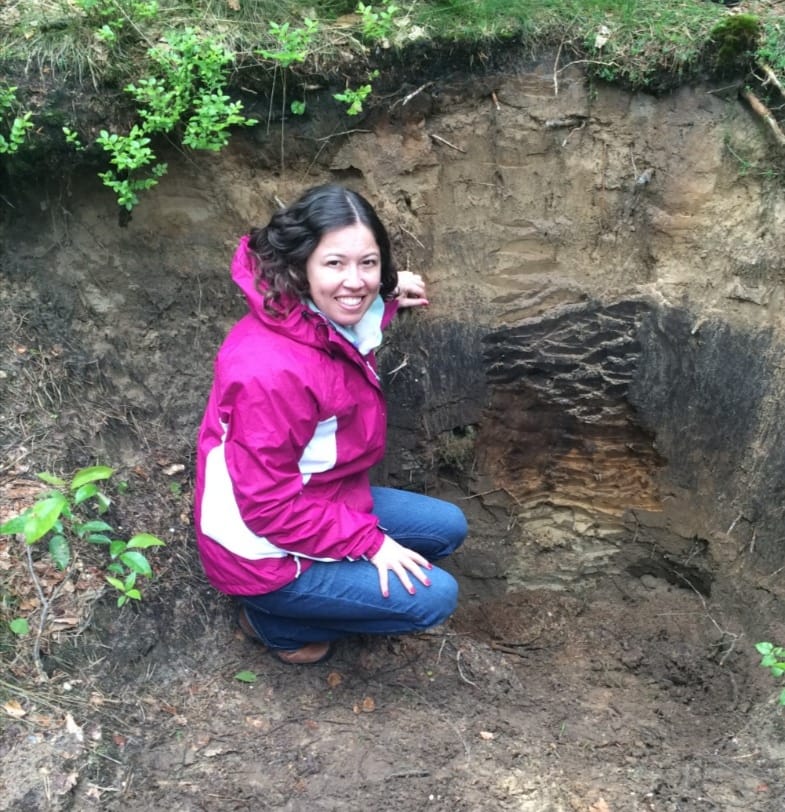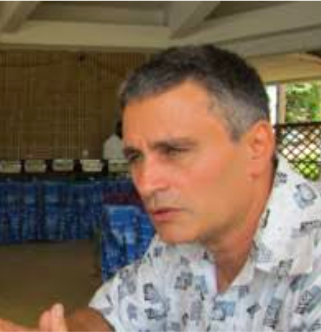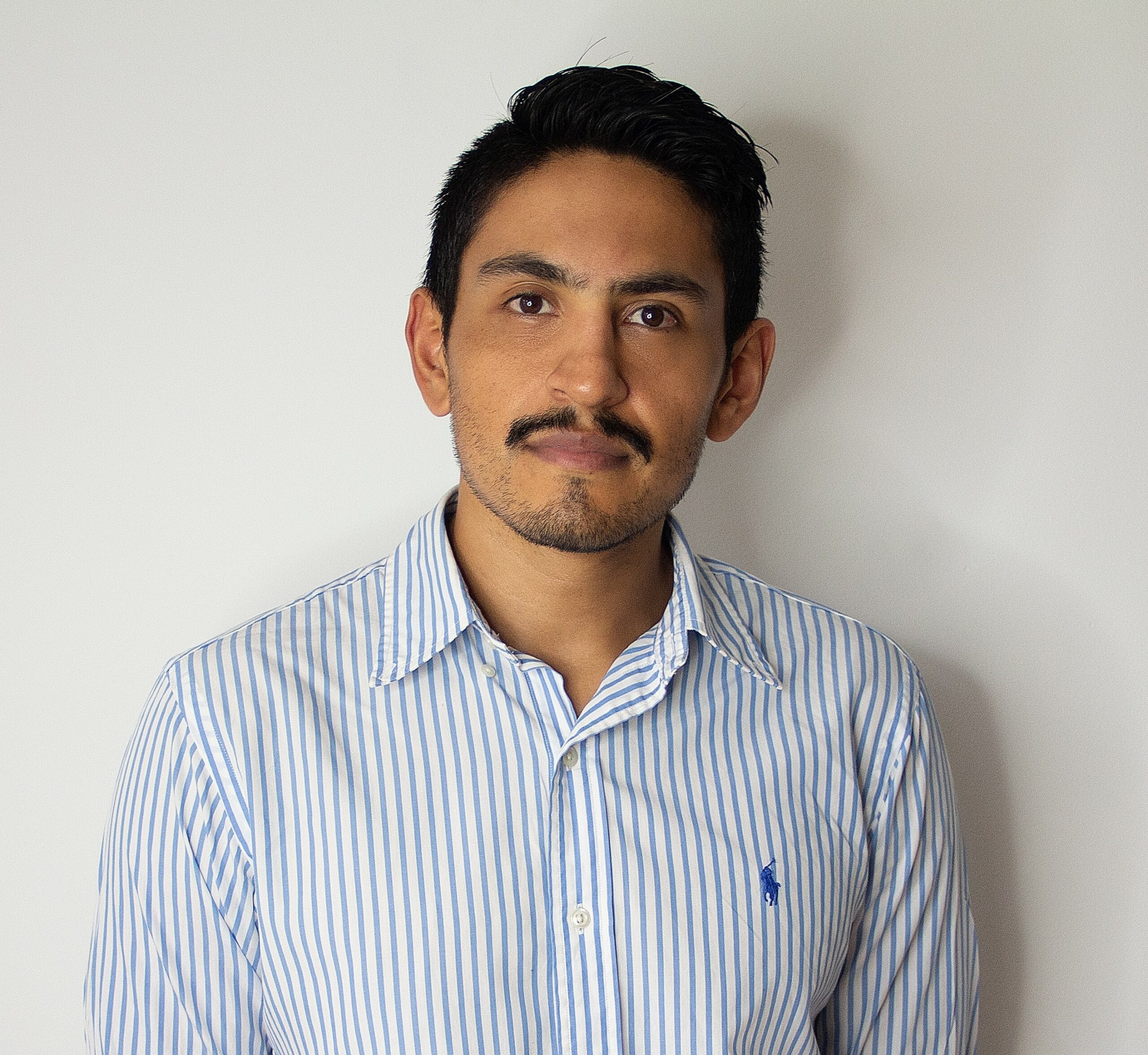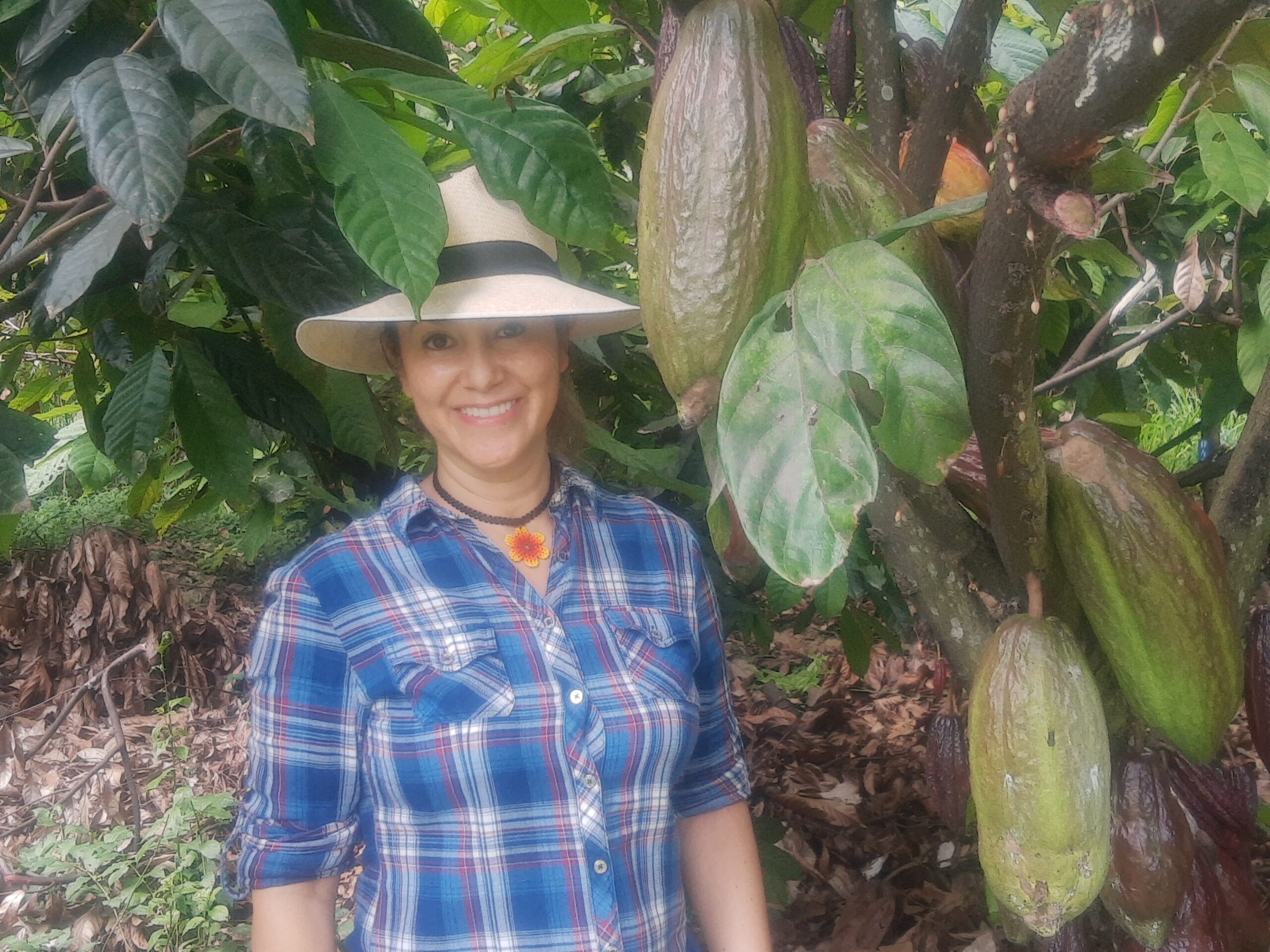This year that is coming to an end marks the reactivation of a project that has brought with it several advances and results that we would like to share with you. Lets read the voices of some of the many collaborators and researchers who made it possible for the project to reach different corners of Colombia, Ecuador and Peru.
We would like to thank those who do not appear and cannot be named, but who gave us a hand in tracing the path we will follow in 2023.

Mayesse da Silva – Researcher at the Alliance Bioversity-CIAT – Leader of the Cadmium in Soils and Cocoa Mapping component.
“2022 was a year in which field activities were fully resumed at full steam after the end of the pandemic. Soil and cocoa sampling at national level was intensified in Colombia and Ecuador reaching 880 sampled sites in 290 farms and 22 departments. In Peru, nearly 300 samples from different locations have been analyzed for cadmium in soils and leaves, complementing the project database, which so far has analysis results from more than 3,300 soil and cocoa samples from the three countries. Samples are expected to be collected from another 1,200 sites in 2023 in the three countries to advance the creation of the regional map of cadmium in soils and cocoa”.

Olivier Sounigo- Researcher at CIRAD – Genetics Component
“One option to mitigate the cadmium problem in cocoa is the using plant material that is not very assimilative of this heavy metal. Studies conducted in recent months have shown a wide range of variability in the accumulation of cadmium in beans in the trees grown by producers, even within the same farm. This wide variability is a favorable condition for the selection of poorly assimilating trees.
In addition, the first results of cadmium evaluation in five commercial clones in Colombia indicate a lower level of cadmium assimilation in grains in the case of one of these clones. However, this encouraging result needs to be verified with analyses of a larger number of trees on a larger number of farms.”

Andrés Charry – Researcher at the Alliance Bioversity-CIAT – Socioeconomic Component Leader.
“In 2022, the socioeconomic component with the support of all the components and several project partners, managed to publish and disseminate six documents with key information on the cocoa value chains in the three countries, as well as the impacts of the European Union food safety regulation on the latter.
We have been able to reach out to some regions, where we collected information at a high level of detail that provides stakeholders in the regions with a frame of reference and repository of information that we hope will facilitate decision making tailored to local contexts”.

Caren Rodriguez – Researcher at AGROSAVIA – Genetic Component
“During 2022, a rewarding work was carried out with cocoa producers from different locations in the departments of Putumayo, Boyacá and Cundinamarca. Chemical analyses of soil samples collected in cocoa plantations were carried out and the results were shared with the producers, an enriching experience where, in addition to reviewing the cadmium content in the soil, the contents of other chemical elements that play an important role in plant nutrition were also contrasted. In addition, soil and cocoa fruit samples were collected from both hybrid plantations and clones, identifying a high variability in the cadmium content in soil even from the same farm. Two cocoa clones have been identified in the field for their contrasting accumulation of cadmium in beans, while one of the clones shows a greater tendency to accumulate cadmium, the other showed a lower accumulation, these results should be confirmed from the analysis of a greater number of fruit samples in different locations. Agrosavia’s work team highlights the participation and interest expressed by the producers in the project and thanks them for the kind welcome they gave us”.

